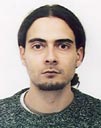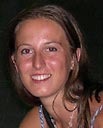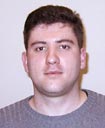Matteo ALFONSI
Laboratori Nazionali di Frascati
matteo.alfonsi@lnf.infn.it
Sarah ALLWOOD
University of Manchester
sea@hep.man.ac.uk

For my Ph.D. thesis I am working on ATLAS, one of the general purpose detectors to be installed at the LHC at CERN. I have been investigating the sensitivity of ATLAS to possible scalar and vector resonances of around 1 TeV in WW scattering. I have looked at the semileptonic decay mode and studied the effect of the fast detector simulation ATLFAST on the cuts for this analysis. I have investigated how to optimise the reconstruction of the hadronically decaying W by varying parameters in the cone algorithm and have compared the results with those from the kt algorithm. I am now looking further at the use of the kt algorithm.


